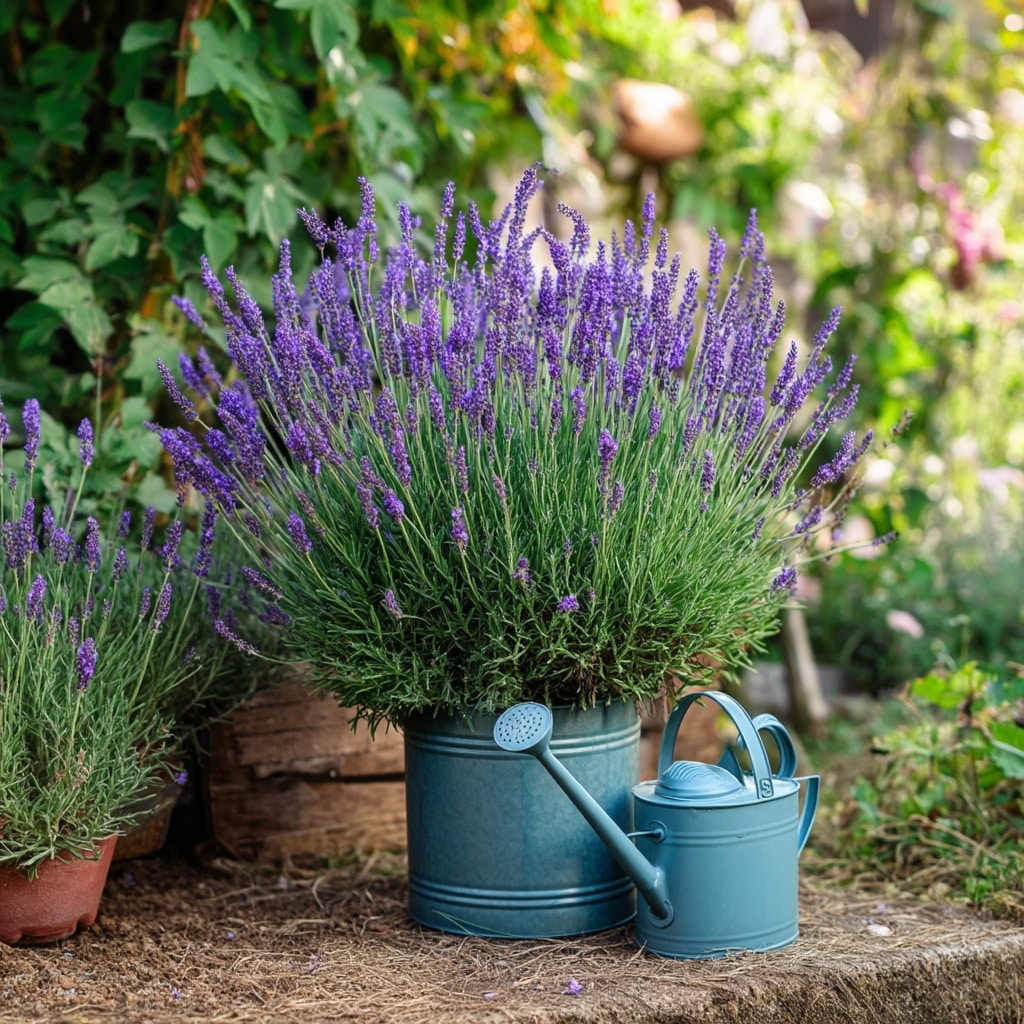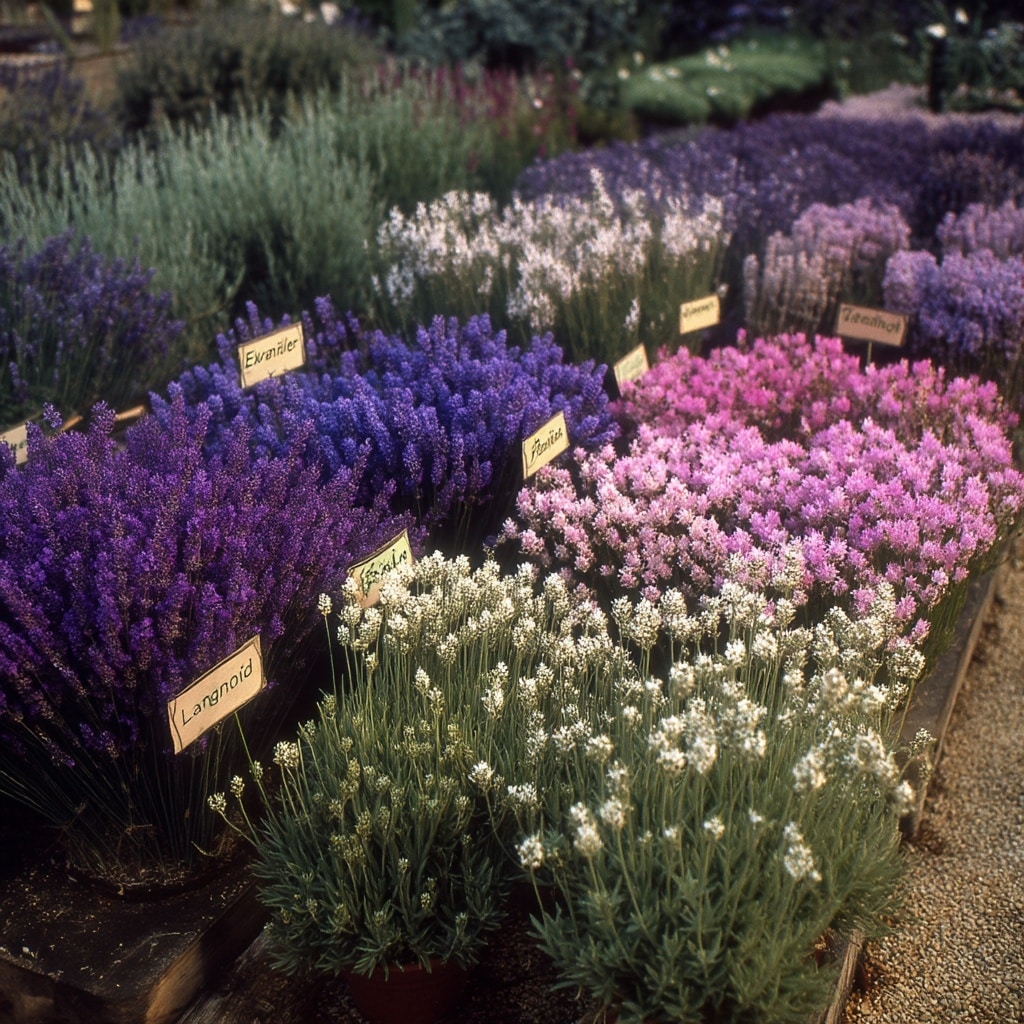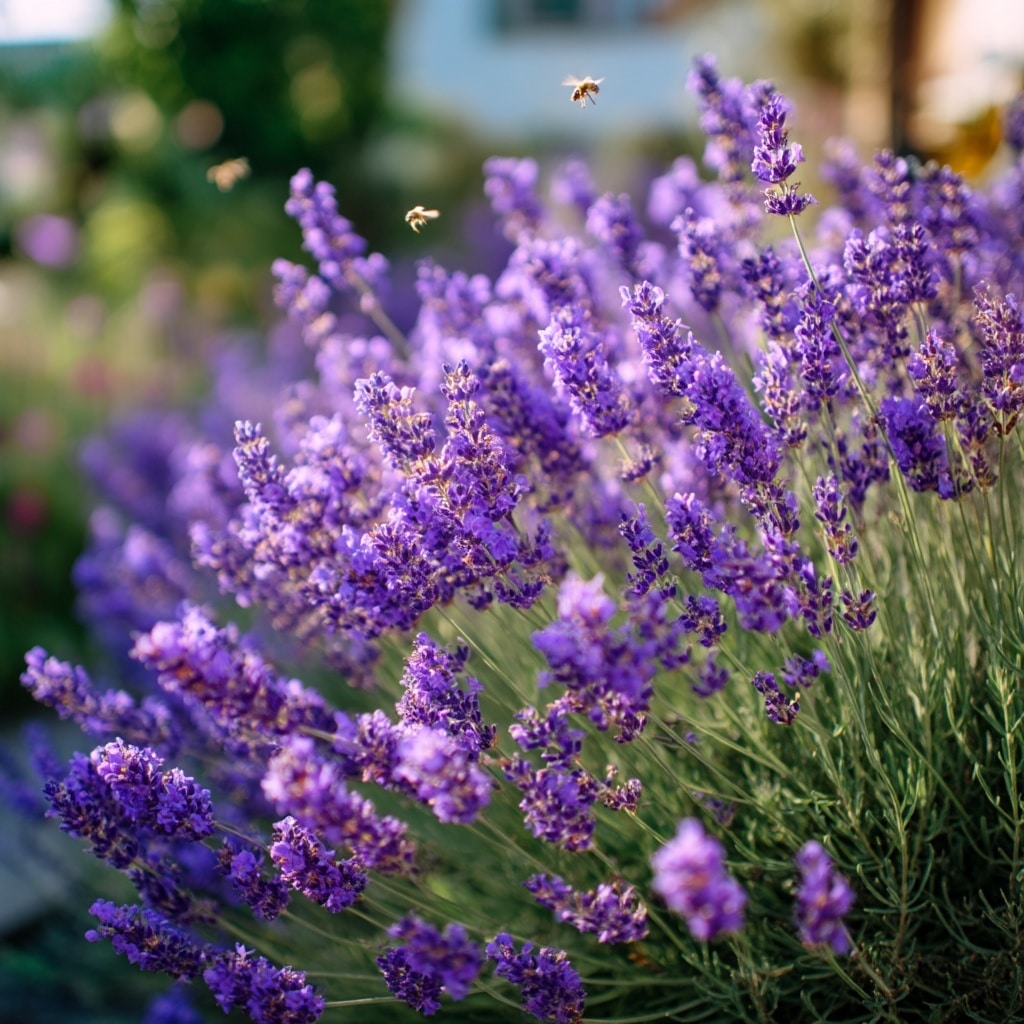The lavender plant is one of the most cherished additions to any garden, known not only for its soothing fragrance and delicate purple blooms but also for its many practical benefits. Whether you’re cultivating it for its calming aroma, culinary potential, or pollinator-friendly charm, the lavender plant rewards gardeners with beauty and resilience.
Native to the Mediterranean, this sun-loving herb has a long-standing reputation for its medicinal and aromatic qualities. The name “lavender” comes from the Latin word lavare, meaning “to wash,” as ancient cultures often added it to baths for its purifying effects. Today, its essential oils are still widely used for relaxation, stress relief, and natural sleep support.
With just a little planning, the lavender plant can become a standout feature in your landscape. It’s low-maintenance, drought-tolerant once established, and attractive to bees and butterflies, making it a great companion for eco-conscious gardeners. Plus, it grows beautifully in containers, borders, or herb gardens, offering year-round charm when properly cared for.
Table of Contents
Planting the Lavender Plant
Growing a healthy lavender plant starts with choosing the right location and soil. This sun-loving perennial thrives in conditions that mimic its Mediterranean origins — lots of light, dry air, and well-draining soil. Fortunately, it doesn’t require nutrient-rich ground, but good drainage is absolutely essential to prevent root rot.
Best Soil for Lavender
The lavender plant tolerates a range of soil types, from poor to moderately fertile, as long as it doesn’t stay soggy. If your garden soil is heavy clay or tends to hold water, amend it with sand, pea gravel, or compost to improve drainage. Slightly alkaline soil (pH 6.5–7.5) is ideal, and raised beds are a great option in wetter climates.
Quick Tip: Avoid over-mulching with moisture-retaining organic matter. Instead, opt for light gravel or small stones to suppress weeds while keeping the crown dry.
Sunlight Requirements
Place your lavender plant in a spot that receives at least 6 to 8 hours of direct sunlight daily. Without enough sun, the plant may become leggy, with fewer blooms and less fragrance.
When to Plant Lavender
- Spring planting is best, once the soil warms to around 60°F (15°C) and the risk of frost has passed.
- Fall planting is possible in mild climates, but choose mature starter plants to ensure winter survival.
How to Plant Lavender
- Space plants 2 to 3 feet apart to ensure good air circulation.
- Dig a hole just deep enough to cover the root ball.
- If drainage is a concern, mix gravel or coarse sand into the bottom of the planting hole.
- Backfill with soil and press gently to remove air pockets.
- Water lightly but deeply after planting.
Note: The lavender plant is difficult to grow from seed. It’s far easier to start with nursery-grown plants or propagate via cuttings.
How to Care for the Lavender Plant

Once established, the lavender plant is remarkably low-maintenance. It thrives in dry conditions, prefers minimal watering, and rewards even casual care with vibrant blooms and fragrant foliage. However, a few essential practices will keep your lavender healthy and productive year after year.
Watering Lavender Properly
The key to watering a lavender plant is restraint. Overwatering is one of the most common mistakes gardeners make.
- Newly planted lavender should be watered once or twice per week until roots establish (usually 3–4 weeks).
- Mature plants need watering only every 2–3 weeks, depending on rainfall and soil drainage.
- As flower buds develop, you can increase watering to once or twice a week to support bloom production.
Watch for yellowing leaves — it’s often a sign of overwatering or poor drainage.
Winter Protection for Cold Climates
In regions with harsh winters, extra care ensures your lavender plant survives until spring:
- Add a winter mulch of straw or evergreen boughs to insulate roots.
- Avoid moisture-retentive mulch around the crown to prevent rot.
- For borderline zones, consider growing lavender in containers. Move pots indoors before the first frost and place them near a bright, south-facing window.
Caring for Indoor Lavender
If you’re keeping a lavender plant indoors during winter:
- Ensure at least 6 hours of direct light daily (grow lights may help).
- Reduce watering — allow soil to dry out 1 inch deep before watering again.
- Avoid fertilizing while the plant is dormant.
Pruning Lavender for Shape and Health
Pruning encourages bushier growth and prevents woodiness at the base.
- Cool climates: Prune in early spring once green shoots appear.
- Warm climates: Prune in fall after blooming.
Cut back about one-third of the top growth, but avoid cutting into old, woody stems, as they may not regrow.
Types of Lavender Plants

Choosing the right lavender plant variety can make all the difference in how well it thrives in your climate and how you use it—whether for fragrance, culinary use, or ornamental value. While all lavenders share that signature scent, some are hardier, more fragrant, or bloom more abundantly than others.
1. English Lavender (Lavandula angustifolia)
This is the most common and widely grown lavender plant, appreciated for its sweet aroma and edible flowers. It’s hardy to USDA Zone 5 and can bloom twice a season in ideal conditions. English lavender is perfect for borders, hedges, or container gardens.
Popular cultivars:
- ‘Hidcote’ – Compact, with deep purple flowers and silver foliage
- ‘Munstead’ – Early-blooming with violet-blue flowers and a tidy shape
- ‘Miss Katherine’ – A unique pink-flowering variety with strong fragrance
Ideal for: Cooler climates, culinary use, dried flower crafts
2. Lavandin (Lavandula x intermedia)
A hybrid of English and Portuguese lavender, lavandins are larger, bloom later, and are known for long flower spikes and strong scent. They are more tolerant of heat and humidity but slightly less cold-hardy (typically USDA Zone 6 and warmer).
Recommended varieties:
- ‘Phenomenal’ – Disease-resistant and excellent in hot, humid regions
- ‘Provence’ – Vigorous grower with long stems and intense fragrance
Ideal for: Large spaces, essential oil production, warm climates
3. Spanish Lavender (Lavandula stoechas)
Spanish lavender has a striking appearance, with pineapple-shaped flower heads topped by vibrant “rabbit ear” petals. It’s more ornamental than culinary and only hardy in Zones 7–9.
Ideal for: Containers, Mediterranean-style gardens, mild winters
4. French Lavender (Lavandula dentata)
Fringed leaves and soft, lavender-blue flowers make this type of lavender plant visually appealing. Like Spanish lavender, it prefers warmer climates and isn’t frost-tolerant.
Ideal for: Indoor growing, decorative hedges, Zones 8–10
Propagation and Harvesting Lavender Plants

One of the joys of growing a lavender plant is that it can easily be multiplied with a little care and patience. Whether you want to fill more space in your garden or create thoughtful handmade gifts, propagating and harvesting lavender is both rewarding and practical.
How to Propagate Lavender from Cuttings
While you can grow lavender from seed, it’s slow and unreliable. The easiest method is by taking softwood or semi-hardwood cuttings from an existing lavender plant.
Step-by-step guide:
- Take cuttings right after flowering. Choose non-flowering side shoots.
- Snip 3–4 inches of stem near the base and remove the lower leaves.
- Gently scrape the outer skin on one side of the stem to expose the tissue.
- Dip in rooting hormone (optional but helpful).
- Insert into a small pot filled with well-draining potting mix.
- Cover with a plastic bag to maintain humidity and place in a warm, shaded spot.
- After 2–3 weeks, gently tug to check for rooting.
Once established, transplant into larger pots or directly into the garden.
When and How to Harvest Lavender Flowers
The best time to harvest is mid-morning, just after the dew has dried and when about half the flower buds are open. This is when the oil concentration — and fragrance — is at its peak.
Harvesting tips:
- Use sharp garden scissors to cut the stems as long as possible.
- Gather into small bundles and secure with a rubber band.
- Hang upside down in a dark, cool, dry area with good air circulation.
- Once fully dry (about 2–3 weeks), gently strip the flowers from the stems.
Storing and Using Dried Lavender
Store dried lavender flowers in an airtight jar in a cool, dark place. Or, make sachets to freshen drawers, repel insects, or promote restful sleep. The calming scent of the lavender plant can even help reduce anxiety naturally.
Bonus use: Add dried buds to homemade soaps, potpourri, or DIY bath salts.
Pests and Diseases That Affect the Lavender Plant
While the lavender plant is naturally pest-resistant and rarely troubled by disease, it’s not completely immune. With the right conditions—especially poor drainage or overcrowding—issues can arise. Knowing what to watch for and how to respond can keep your plants healthy and thriving.
Common Pests
- Aphids
These tiny sap-sucking insects cluster on new growth, causing yellow leaves and stunted development. They also leave behind a sticky residue that can lead to sooty mold. Solution: Spray affected areas with a strong jet of water or apply insecticidal soap. Encourage beneficial insects like ladybugs and lacewings. - Whiteflies
These small, white, flying insects suck sap from the undersides of leaves, causing yellowing and wilting. Solution: Use yellow sticky traps, natural predators (like parasitic wasps), or neem oil sprays. - Thrips
These tiny pests leave silver streaks and deformities on leaves and buds. They are more common in greenhouses or humid conditions. Solution: Prune and dispose of infested growth. Use insecticidal soap or a diluted isopropyl alcohol spray.
Fungal and Root Diseases
- Root Rot (Phytophthora, Rhizoctonia, Pythium)
The lavender plant is especially prone to root rot when grown in poorly draining soil. Symptoms include wilting, yellowing leaves, and rotting at the base of the plant. Solution: Ensure excellent drainage. Avoid overwatering and do not plant lavender in low-lying areas. If rot occurs, remove and destroy the infected plant. - Fusarium Wilt
This fungal disease causes stunted growth, leaf yellowing, and sudden dieback. It often begins on one side of the plant. Solution: Remove infected plants. Rotate crops and improve air circulation. Use disease-resistant varieties if available. - Leaf Spot (Bacterial or Fungal)
Spots appear between veins, turning brown or black and eventually causing holes in leaves. Solution: Remove infected leaves, improve airflow, and avoid wetting foliage during watering.
Prevention Tips
- Space plants 2–3 feet apart to ensure good airflow.
- Avoid overhead watering; use drip irrigation or water at the base.
- Never let the lavender plant sit in waterlogged soil.
- Sanitize tools between uses to avoid spreading disease.
Fun Facts and Historical Uses of the Lavender Plant
The lavender plant has a rich history that stretches back thousands of years, touching cultures across the globe. More than just a fragrant herb, it has been valued for its symbolic, medicinal, and practical uses throughout time.
Ancient Roots
- The lavender plant was prized by Ancient Egyptians, who used its essential oils during the embalming process. Lavender-scented shrouds were believed to purify and protect the spirit in the afterlife.
- In Ancient Rome, lavender was added to bathwater for its cleansing properties — which is how it got its name from the Latin word lavare, meaning “to wash.”
- Roman soldiers also used lavender oil on wounds for its antiseptic qualities, and it was commonly grown in monastery gardens during the Middle Ages for healing salves and teas.
Cultural Symbolism
- In folklore, lavender symbolized purity, calm, and protection. Sachets were often sewn into clothing or bedding to ward off evil, promote love, or induce peaceful sleep.
- Queen Elizabeth I was known to demand fresh lavender for her tea daily and used it to treat frequent migraines.
Modern-Day Traditions
Even today, the lavender plant is used in calming rituals around the world:
- Dried lavender sachets are tucked into pillowcases to promote restful sleep.
- Brides carry lavender bouquets as a symbol of devotion and luck.
- It remains a staple in aromatherapy, thanks to its natural sedative and anti-anxiety effects.
Fun Fact: The scent of lavender has been scientifically shown to reduce heart rate and blood pressure — making it more than just a pleasant smell.
Whether used in ancient embalming rituals or modern-day essential oils, the lavender plant continues to play a role in both beauty and well-being.
Culinary Uses of the Lavender Plant
While most people grow the lavender plant for its scent and beauty, it also deserves a spot in the kitchen. Used carefully, lavender can add a light floral note to both sweet and savory dishes. The key is moderation — a little goes a long way.
Which Lavender is Edible?
Only certain types of lavender plant are suitable for eating. Stick with English lavender (Lavandula angustifolia) and its named cultivars like ‘Munstead’ or ‘Hidcote’. These varieties have the sweetest, most palatable flavor.
Avoid using Lavandin or ornamental lavenders like Spanish and French types in cooking — they can be too pungent or bitter.
How to Use Lavender in Recipes
- Herbes de Provence: A classic French herb blend often includes dried lavender buds. Sprinkle it on roasted vegetables, chicken, or potatoes.
- Lavender-Infused Syrup: Steep dried buds in simple syrup for a fragrant addition to lemonade, cocktails, or lattes.
- Lavender Sugar: Mix dried flowers with granulated sugar to use in baking, teas, or as a topping for scones and muffins.
- Baked Goods: Add a small amount of dried, crushed lavender to shortbread cookies, cakes, or biscotti for a unique twist.
- Teas and Lemonade: Dried lavender pairs beautifully with honey, mint, or lemon balm in homemade herbal teas.
Flavor Pairing Tips
The flavor of the lavender plant is similar to rosemary but milder and more floral. It pairs well with:
- Lemon
- Honey
- Berries
- Vanilla
- Mint
- White chocolate
Tip: Always start with a small amount — ½ teaspoon of dried buds is often enough for an entire recipe.
Drying and Storing for Culinary Use
To use your lavender plant in the kitchen year-round:
- Harvest just before full bloom for peak flavor.
- Dry stems in bundles away from sunlight.
- Once dry, remove buds and store in an airtight jar.
Stored properly, dried lavender will retain its flavor and aroma for up to a year.
Conclusion
The lavender plant is more than just a pretty face in the garden — it’s a practical, low-maintenance herb that brings fragrance, color, and purpose to any landscape. Whether you’re planting it for pollinators, home remedies, or culinary delights, lavender offers something for everyone.
With proper planting, minimal care, and thoughtful harvesting, you can enjoy this versatile herb for years to come. From calming teas to garden borders buzzing with bees, the lavender plant truly earns its place in every gardener’s heart.
Add it to your garden, your pantry, or even your pillow — the lavender plant is always in season.


